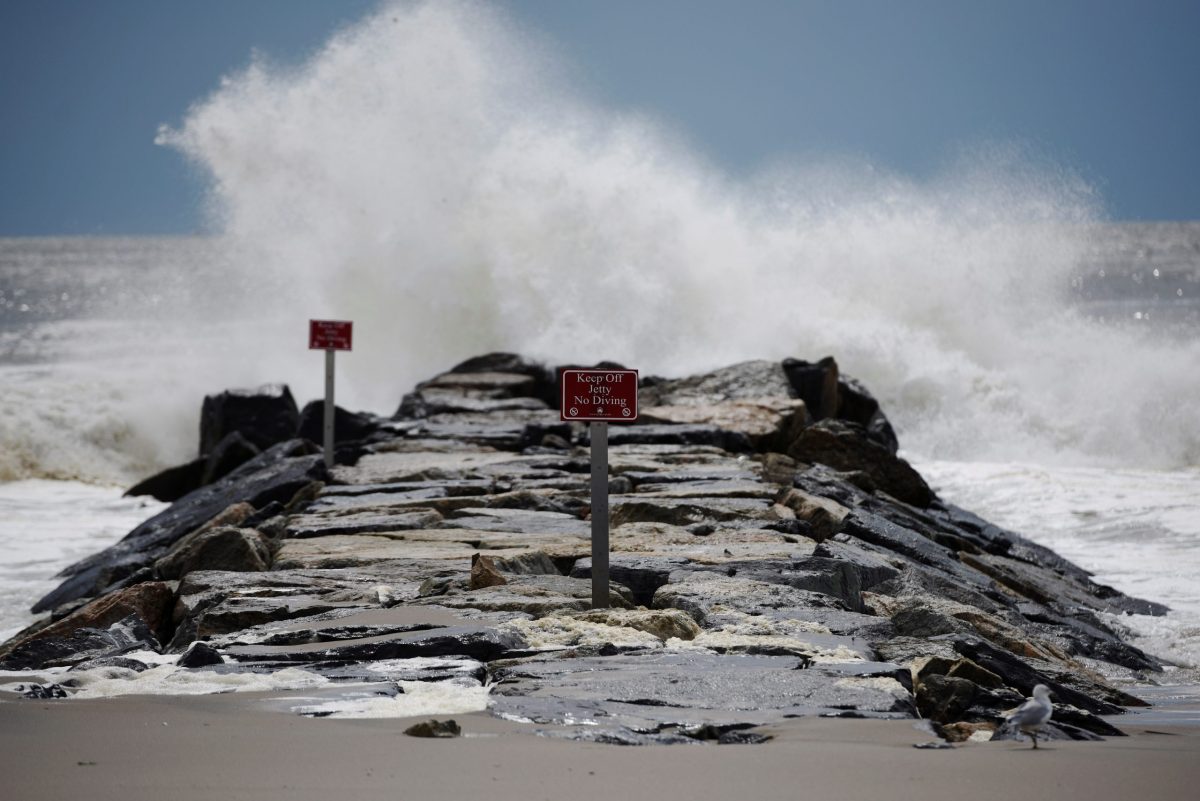BY COSTA CONSTANTINIDES AND JUSTIN BRANNAN
Many of us were heartened to see the $2 trillion climate plan proposed by Joe Biden last week. It finally addresses the needs for clean, renewable energy as well as the environmentally racist policies that got us into this mess in the first place.
Yet as we push for a national Green New Deal that frees us from the fossil fuel industry, we must accept that climate change, to some degree, is here to stay. That’s why the United States must not only act to mitigate the effects of pollution, but adapt to the damage a hotter planet will bring in the decades to come.
Nowhere do we need that more than here in New York City, where 520 miles of coastline will be battered by rising tides. The next federal administration and Congress must use its first 100 days in office to invest in a resiliency plan that keeps every New York City neighborhood safe. We are staring down a crisis like we have never seen — and right now we’re set to blink first.
Hurricane Sandy barreled into our neighborhoods almost 8 years ago and killed 43 New Yorkers. Since then, we’ve gotten little more than studies and sandbags; far-flung promises of investments to come, and single-neighborhood proposals that were frankly insulting to seven-eighths of the City. New York City’s shoreline is made up primarily of low-income communities of color in the outer boroughs. Yet, little has changed since we raised this issue a year ago, when extreme heat and violent storms gave a one-two punch to our outdated, unprepared power grid. So what has our city accomplished to prepare for the next major hurricane? The answer is: very little outside of Manhattan.
One thing did change: our climate has actually gotten worse. Our refusal to act in a meaningful way puts us closer to the worst projections for 2100, when New York City’s Panel on Climate Change projects that JFK Airport might be underwater and we will endure four times as many heat waves as we do now. There have been six named storms since mid-May, including Tropical Storm Fay, which pummeled the Big Apple earlier this month. This is well above the average for this point in the hurricane season.
Frankly, inaction over the last four years is a disservice to the estimated 366,000 New Yorkers which the Union of Concerned Scientists expects to be inundated by relentless flooding within 80 years. They represent a change in home ownership in which lenders demand more money upfront. Even banks realize climate change is a matter of when, not if. Rising seas, at their record rate, will displace whoever rising rents cannot.
This keeps us up at night, which is why we introduced legislation last year to create a five-borough resiliency plan. While the Army Corps of Engineers’ storm surge study was well intended, it was incredibly limited by the legislation that created it. Demands grew all over the City for a plan that truly assessed sea level rise, but didn’t prioritize one needs of one neighborhood over another. Our bill does that.
A five-borough resiliency plan can begin implementation as soon as the Council passes our bill. It would literally lay the foundation for a Green New Deal, provide thousands of sorely needed jobs and set us on course for a safer future. But we still need those federal dollars. Right now, the current U.S. Senate has essentially left New York State for dead — even though we pumped out more than $250 billion in federal tax revenue in 2018 (almost 19% of the national budget).
Manhattan may still be the economic engine that drives our city, but the fuel for that roaring engine lives in the outer boroughs. To lose New York City, the economic engine of the nation, would be to lose the nation itself. We need leaders who realize that and will act just as FDR did in the throes of the Great Depression. FDR used New York as the laboratory for the New Deal, and partnered with local leaders, because what works here can weather the worst storms anywhere else. Washington saw that same need for New York City in those dark days after 9/11, issuing bonds and sending relief when we were on the brink of collapse.
With COVID-19 still here and the worst of the climate crisis ahead, we need that kind of support again. Resilience in every borough is a strong place to start.
Costa Constantinides represents the 22nd City Council District, which includes the Queens neighborhoods of Astoria and Long Island City. Justin Brannan represents the 43rd City Council District, which covers the Brooklyn neighborhoods of Bay Ridge, Dyker Heights, Bensonhurst and Bath Beach.



































